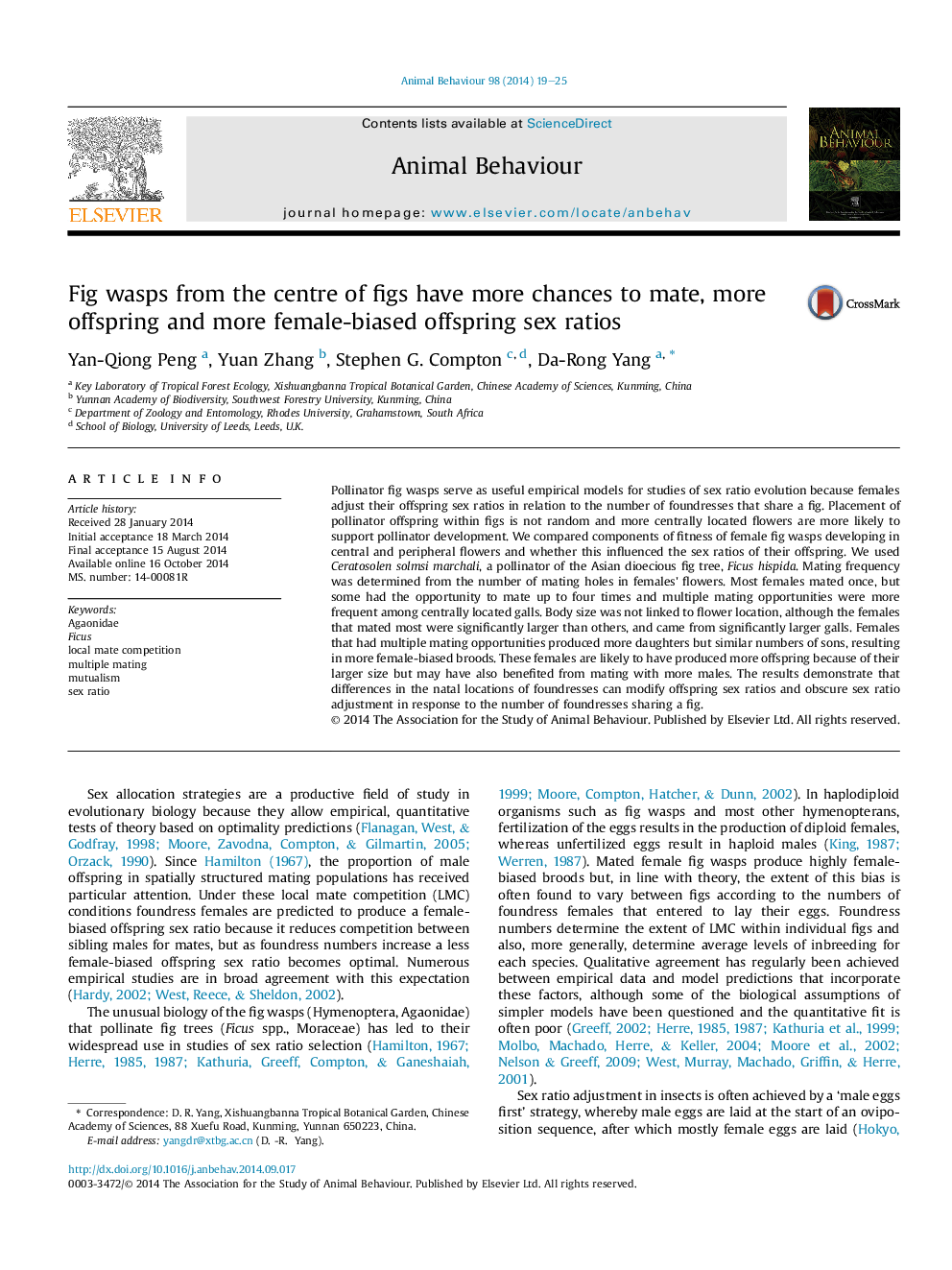| کد مقاله | کد نشریه | سال انتشار | مقاله انگلیسی | نسخه تمام متن |
|---|---|---|---|---|
| 2416322 | 1552230 | 2014 | 7 صفحه PDF | دانلود رایگان |
• Fig wasps, which are widely used in sex ratio studies, often mate singly.
• Ceratosolen solmsi marchali is promiscuous.
• Multiple-mating opportunities were more frequent in centrally located galls.
• Multiple-mated females had more offspring with more female-biased sex ratios.
• Foundress mating frequency obscured sex ratio adjustment to foundress numbers.
Pollinator fig wasps serve as useful empirical models for studies of sex ratio evolution because females adjust their offspring sex ratios in relation to the number of foundresses that share a fig. Placement of pollinator offspring within figs is not random and more centrally located flowers are more likely to support pollinator development. We compared components of fitness of female fig wasps developing in central and peripheral flowers and whether this influenced the sex ratios of their offspring. We used Ceratosolen solmsi marchali, a pollinator of the Asian dioecious fig tree, Ficus hispida. Mating frequency was determined from the number of mating holes in females' flowers. Most females mated once, but some had the opportunity to mate up to four times and multiple mating opportunities were more frequent among centrally located galls. Body size was not linked to flower location, although the females that mated most were significantly larger than others, and came from significantly larger galls. Females that had multiple mating opportunities produced more daughters but similar numbers of sons, resulting in more female-biased broods. These females are likely to have produced more offspring because of their larger size but may have also benefited from mating with more males. The results demonstrate that differences in the natal locations of foundresses can modify offspring sex ratios and obscure sex ratio adjustment in response to the number of foundresses sharing a fig.
Journal: Animal Behaviour - Volume 98, December 2014, Pages 19–25
